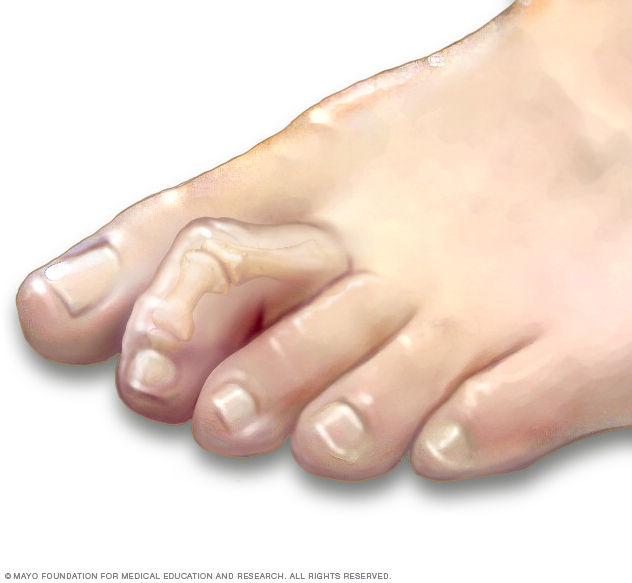Description
 Toe deformities are not uncommon for adults to develop.
Toe deformities are not uncommon for adults to develop.
The most common are hammer toe, claw toe, mallet toe and Quintus Varus (deviation of the little toe). These deformities become more pronounced the more weight we put on our feet. Pain develops as the toe rubs against the top of the shoe, making it difficult to fit comfortably.
If the toe is still flexible, it's easier to intervene than when the ligament and tendons have begun to stiffen and maintain a rigid position.
Hammer toe
Hammer toes can develop on any toe. Most often, they are caused by a problem of muscular involvement: the larger muscles and ligaments of the leg and foot force more than the small intrinsic muscles of the toes, creating a misalignment and forcing the toe tendons to bend.
The result is pain from the tip of the toe to the sole of the foot. As a result, a bony prominence can develop. Tendons, ligaments, and joint capsules in the affected area eventually shrink and stiffen.
Over time, the deformity causes painful horniness, skin irritation and discomfort when wearing shoes. If not treated in time, the problem can deteriorate into an ulcer or infection.
Claw toe and Mallet toe
What distinguishes claw and mallet toes from hammer toes is the joint affected, and hence the appearance of the deformity. The problem lies in the distal part of the toe. The causes and consequences are the same as hammer toe.
Quintus varus
The 4th and 5th toes often show inward deviations that can be bothersome and painful over time. Also caused by abnormal ligament function, the deviation leads to painful corns on the outside of the little toe and between the toes.
Conservative treatment
Before considering surgery, your podiatrist will offer various conservative treatments to prevent pain, but without being able to completely correct the deformity:
- Wearing a custom-made foot orthosis to increase comfort and slow down the worsening of the deformity.
- Wearing a wider, deeper shoe
- Wearing a splint or adapted pads
- Removal of painful corns or calluses
Surgery
If conservative methods fail, Dr. Cantin-Langlois, podiatrist, can perform surgery under local anesthetic to straighten the toes. Authorized in forefoot reconstruction, she will guide you through the options of a personalized treatment plan following further examination.
Your feet shouldn't be in pain! Contact us today for a quick assessment of your condition.
All content on this site is verified and approved by Dr. Sarah Cantin-Langlois, podiatrist.
